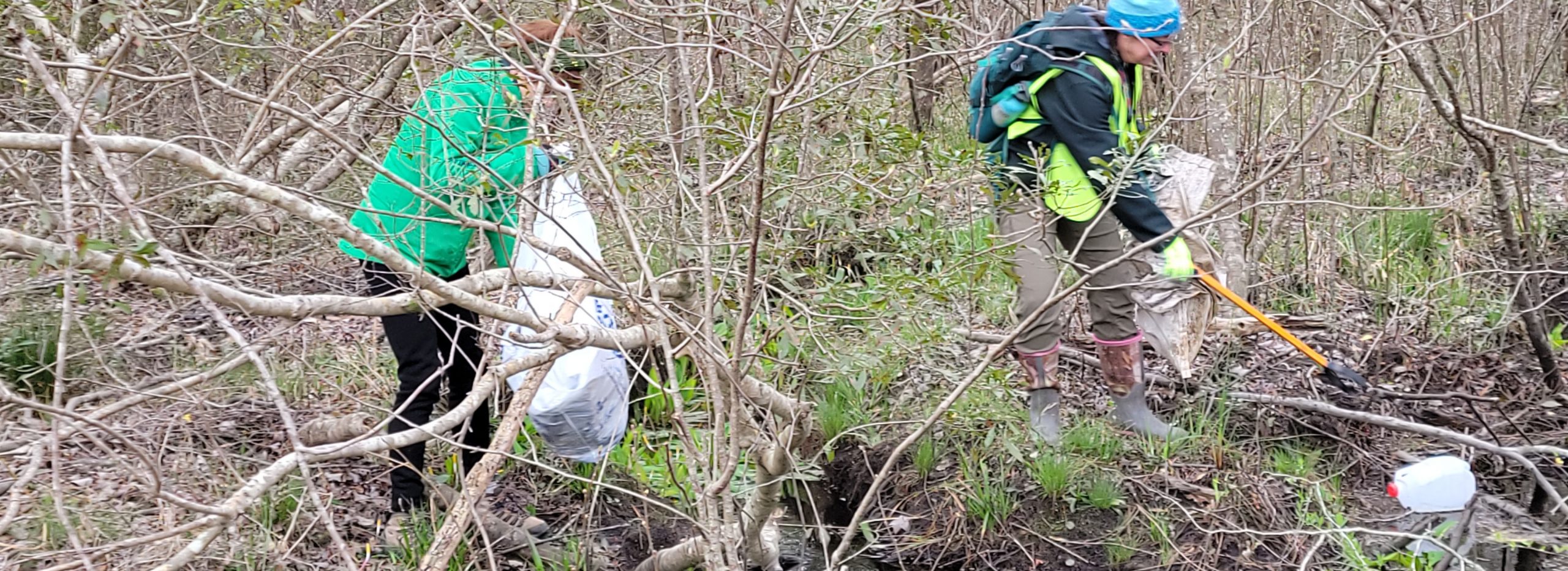It was early on a Saturday morning, and kind of cold and grey. The highway shoulder was muddy, difficult to walk along, and somewhat dangerous with cars and trucks speeding nearby. And the task at hand itself was pretty gross. Yet 20 volunteers showed up on the first day of spring, March 20, to help clean up litter from the entrance to the Reserve. Together they removed 30 bags of trash from about two miles of road in a couple of hours. (Imagine how much they would have collected if they could have gone all the way to Pawley’s Island.)
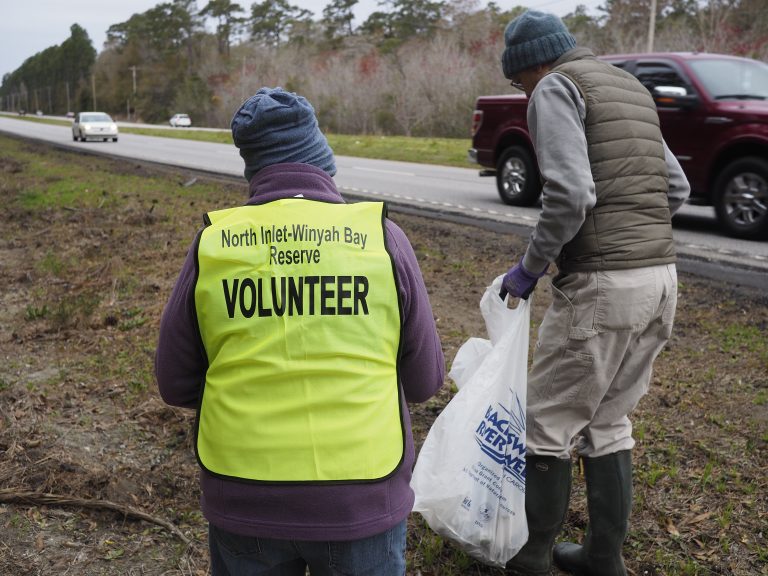
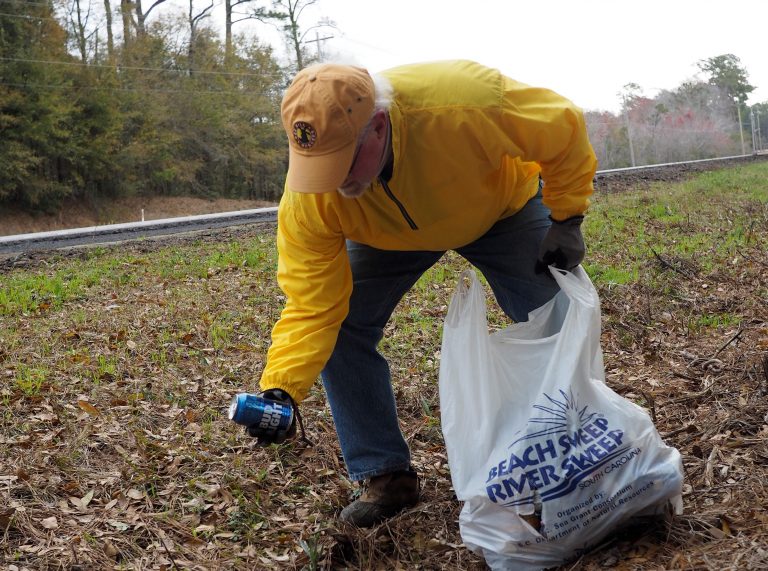
While I am continually amazed by and grateful for our community members’ willingness to give their time to help pick up trash from roadsides, marshes and beaches, relying on the good will of volunteers (plied with cookies and molasses cake) is not a long-term solution to the litter problem. Stopping trash from getting onto the roadside and beaches and into waterways in the first place is the solution. For this reason, we are gathering data, as much a practical, during our clean-ups, to better understand the sources of litter. The results of this spring’s clean-up were not too surprising, with the largest portion of items by percent being plastics. This includes food wrappers, bottles and caps, bags, straws/stirrers and dinnerware. By comparison, the Keep America Beautiful 2009 National Visible Litter Survey found that tobacco products were the most prevalent aggregate litter item, comprising roughly 38 percent of all litter.
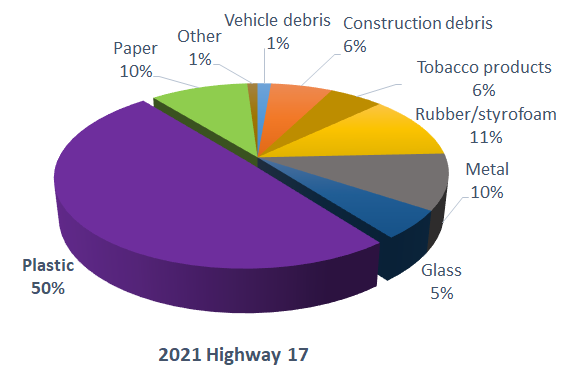
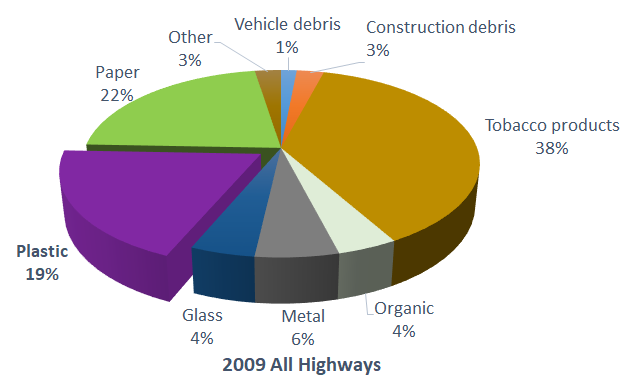
Another way to assess the data is by source categories. Litter can be generally grouped by vehicle debris, fishing/recreation, food/beverage, cigarettes/tobacco, and packaging. In the case of our highway clean-up, litter from food and beverage sources stands out by far.
In fact, food packaging was found to be the most common form of beach trash for the first time during the Ocean Conservancy’s 2019 International Coastal Cleanup, dethroning cigarette butts which had topped the list for the last 33 years. So maybe the good news is people are smoking less, but the increasing fast food and candy bar wrappers are troubling on both health and environment fronts.
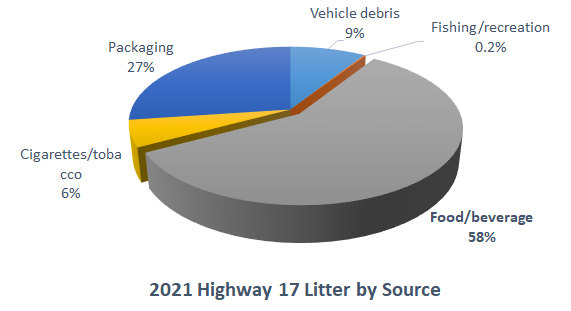
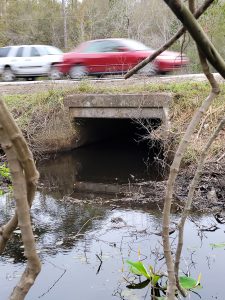
Vehicle debris: Car parts, tires, building materials
Fishing/recreation: Fishing line, nets, lures, bait containers
Food/beverage: Aluminum beverge cans, food cans, glass and plastic bottles, plastic caps and lids, straws and wrappers, food wrappers, utensiles and dinnerware
Cigarettes/tobacco: cigarettes and filters, cigars tips, packaging
Packaging: Plastic bags, paper and cardboard boxes, styrofoam
So then the question for us to ponder is how do Big Mac wrappers and Bud Light cans get from their points of origin to the ditch in front of Hobcaw Barony? And the challenge for us to work on together is what do we do to stop it?


